CNC (Computer Numerical Control) is an automated manufacturing technology that utilizes computer control systems to precisely manipulate machine tools and equipment for machining and manufacturing purposes. Before delving deeper into CNC, let's begin by understanding the basic definition and concepts behind CNC.
CNC stands for "Computer Numerical Control." This term can be broken down into two key components: "Computer" and "Numerical Control." The computer is at the core of CNC technology, responsible for processing and executing numerical control commands to govern the motion and operations of machine tools or equipment.
To grasp the essence of CNC technology, it's essential to explore its fundamental concepts:
Automation: CNC systems automate the operation of machine tools, reducing the need for manual intervention. This automation enhances precision and efficiency in manufacturing processes.
Numerical Control: CNC relies on numerical data and mathematical algorithms to control the movement and actions of machines. This precise control allows for the creation of intricate and complex parts.
Computer Control: Modern CNC systems are powered by computers that execute programmed instructions. These instructions, often written in G-code or similar languages, dictate how the machine should operate.
Feedback Loops: CNC machines often incorporate feedback mechanisms like sensors and encoders. These devices provide real-time data on the machine's position and performance, enabling corrections and adjustments during operation.
Toolpath Planning: CNC programming involves defining toolpaths, specifying the sequence of tool movements needed to create a desired part. This planning ensures efficient material removal and minimizes waste.
Precision Machining: CNC is renowned for its exceptional precision. It can produce parts with tight tolerances, meeting stringent quality standards across various industries.
Versatility: CNC technology is versatile and can be applied to various materials, including metals, plastics, wood, and composites. It serves a wide range of industries, from aerospace to healthcare.
Reduced Lead Times: CNC machining often results in shorter lead times, making it an attractive choice for rapid prototyping and production.
Customization: CNC allows for the easy customization of parts and products, as design changes can be implemented quickly through software modifications.
Scalability: CNC systems can be scaled to accommodate both small-scale and large-scale production, making them suitable for diverse manufacturing needs.
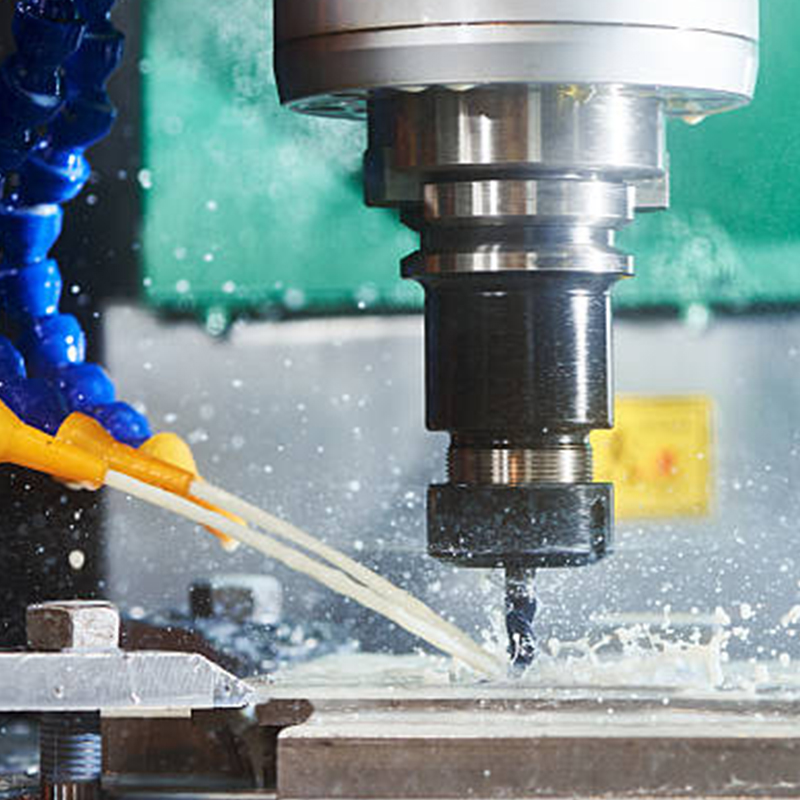
In this section, we'll explore the working principles that underlie CNC (Computer Numerical Control) technology. Understanding how CNC systems operate is crucial to appreciating their capabilities and applications.
A CNC system consists of several key components, each playing a vital role in its operation:
Computer: At the heart of CNC is a computer that processes instructions and controls the machine's movements. This computer interprets the CNC program, which contains the necessary data for machining.
Controller: The controller acts as an interface between the computer and the machine. It translates the program's instructions into specific actions, such as tool movements and spindle speed adjustments.
Machine Tool: The machine tool is the physical equipment used for machining operations. It can be a milling machine, lathe, router, or any other tool designed for cutting, shaping, or drilling materials.
Drive Motors: Drive motors are responsible for moving the machine's components, such as the cutting tool and workpiece. These motors receive signals from the controller to execute precise movements.
Feedback Systems: Feedback systems, including encoders and sensors, provide real-time data on the machine's position, speed, and performance. This information is crucial for maintaining accuracy.
Tooling: Tooling comprises cutting tools, drill bits, and other accessories used for material removal. CNC machines can accommodate various tool types, allowing for flexibility in machining processes.
CNC machining begins with programming, which involves creating a set of instructions that guide the machine's actions. The programming process includes the following steps:
CAD (Computer-Aided Design): Engineers and designers use CAD software to create a detailed digital model of the part they want to produce. This digital model serves as the basis for CNC programming.
CAM (Computer-Aided Manufacturing): CAM software converts the CAD model into a CNC program by generating toolpaths, specifying cutting parameters, and creating G-code instructions.
G-code: G-code is a language that CNC machines understand. It consists of alphanumeric codes that represent specific commands, such as tool movement, spindle speed, and coolant flow. Programmers write or generate G-code instructions.
Loading the Program: Once the G-code program is generated, it is loaded into the CNC machine's computer or controller.
When the CNC program is loaded and initiated, the machine starts executing the instructions in a precise sequence:
Tool Setup: The operator installs the appropriate cutting tool and secures the workpiece in the machine.
Homing and Reference Point: The machine moves to a reference point (home position) to establish its coordinate system.
Execution: The CNC controller reads the G-code instructions and commands the machine to move the tool along the specified toolpath. It controls factors like tool speed, feed rate, and tool changes.
Monitoring and Feedback: Throughout the machining process, sensors and feedback systems provide data on the machine's performance. If deviations are detected, the controller makes real-time adjustments to maintain accuracy.
Completion: Once the machining is complete, the finished part is removed, and the CNC machine may be set up for the next job.
CNC machining offers several advantages, including:
Precision: CNC machines can produce highly accurate parts with tight tolerances.
Efficiency: Automation reduces the need for manual labor and enhances production efficiency.
Flexibility: CNC machines can switch between different tasks quickly and accommodate various materials.
Consistency: CNC ensures consistent quality across multiple parts or products.
Complexity: CNC can create intricate shapes and features that would be challenging or impossible with manual methods.
Cost-Effective: Despite the initial investment, CNC can reduce long-term production costs.

In this section, we'll delve into the diverse applications of CNC (Computer Numerical Control) technology across various industries. CNC machining has revolutionized manufacturing processes and plays a pivotal role in creating a wide range of products.
Aerospace: CNC machining is extensively used in aerospace manufacturing for producing critical components such as aircraft engine parts, landing gear components, and structural elements. Its precision and reliability are crucial in this industry.
Automotive: In the automotive sector, CNC technology is employed for manufacturing engine components, transmission parts, chassis components, and intricate interior and exterior details. CNC machining ensures consistency and high-quality results.
Medical Devices: CNC machining is instrumental in the production of medical devices and implants. It enables the fabrication of precise and customized components, contributing to advancements in healthcare.
Electronics: The electronics industry relies on CNC for creating circuit boards, enclosures, and intricate components. CNC milling and drilling processes are commonly used to ensure precision in electronic device manufacturing.
Metal Fabrication: CNC machines are widely used in metal fabrication shops for cutting, bending, and shaping metal sheets and profiles. They excel in creating complex structures and metal parts.
Metalworking Tools: CNC technology is essential for producing metalworking tools such as end mills, drills, and lathe tools. These tools must meet strict tolerances to ensure efficient machining processes.
Furniture Production: CNC routers are employed in furniture manufacturing to craft intricate designs and cut precise joinery. This technology streamlines the production of custom and mass-produced furniture.
Cabinet Making: CNC machines play a significant role in cabinet making, ensuring precise cuts and intricate carvings for cabinets and cabinetry components.
Rapid Prototyping: CNC machining is an integral part of rapid prototyping, allowing engineers and designers to quickly create prototypes for testing and evaluation.
Customization: The ability to easily customize products makes CNC technology valuable in producing one-of-a-kind items, from personalized gifts to architectural elements.
Artistic Creations: CNC routers and mills are used by artists and sculptors to create intricate and large-scale art pieces. CNC technology enables precise replication of designs and intricate detailing.
Educational Institutions: CNC machines are used in educational settings to train students in machining techniques and prepare them for careers in manufacturing and engineering.
Research and Development: CNC technology supports research efforts by providing a means to fabricate prototypes and conduct experiments with precision.
Hobby CNC Machines: Affordable desktop CNC machines have become popular among DIY enthusiasts and hobbyists for creating custom projects, from model airplanes to jewelry.
In this section, we'll compare CNC (Computer Numerical Control) technology with traditional manufacturing methods, emphasizing the advantages and disadvantages of each approach.
Precision and Accuracy: CNC machines offer unparalleled precision, ensuring consistent quality and minimal errors. Traditional methods often rely on manual skills and may result in variations.
Efficiency: CNC automation reduces labor requirements and allows for uninterrupted production. Traditional methods often involve time-consuming manual operations.
Complexity: CNC technology can handle intricate designs and complex geometries with ease, while traditional methods may struggle with such precision and detail.
Repeatability: CNC ensures that every part produced is identical to the previous one, making it ideal for mass production. Traditional methods may lead to variations between individual pieces.
Customization: CNC allows for easy customization by adjusting the computer program, making it versatile for both mass production and one-off items. Traditional methods may require significant retooling for customization.
Material Waste: CNC machining is efficient in material usage, resulting in less waste. Traditional methods, especially subtractive ones, often generate more waste.
Low Initial Cost: Traditional manufacturing methods, such as manual machining, may have lower initial setup costs compared to CNC machines, which require a substantial investment.
Flexibility: Traditional methods can adapt to a wide range of tasks without the need for complex programming or reprogramming, making them suitable for small-scale or custom jobs.
Skill Transferability: Traditional methods often rely on the expertise of skilled machinists, and these skills can be transferred to various machines and industries.
Maintenance Simplicity: Traditional machines are generally easier and less costly to maintain and repair, whereas CNC machines require specialized knowledge for maintenance.
Applicability to Low-Volume Production: Traditional methods are sometimes more cost-effective for low-volume or one-off production runs, as they avoid the setup time associated with CNC programming.
Many industries have transitioned from traditional manufacturing to CNC machining due to its advantages in terms of precision and efficiency. However, it's essential to recognize that traditional methods still have a place in certain scenarios, particularly for smaller-scale or specialized tasks.
In this section, we'll explore the various types of CNC (Computer Numerical Control) equipment and tools available, as well as the considerations when choosing the right CNC system for specific applications.
CNC Milling Machines: These machines are used for removing material from a workpiece using rotating cutting tools. There are vertical and horizontal milling machines, each suited to different tasks.
CNC Lathes: CNC lathes are used for shaping cylindrical parts by rotating the workpiece while a cutting tool moves along it. They are essential for producing shafts, bolts, and other cylindrical components.
CNC Routers: CNC routers are primarily used for cutting, carving, and engraving wood, plastic, and other materials. They are popular in woodworking and signage industries.
CNC Plasma and Laser Cutters: These machines use high-energy beams of plasma or laser to cut through various materials, including metals and plastics. They are crucial in metal fabrication and sheet metal cutting.
CNC Waterjet Cutters: Waterjet cutters use a high-pressure stream of water mixed with abrasive materials to cut through materials like metal, stone, and glass. They are known for their precision.
CNC Wire EDM (Electrical Discharge Machining): Wire EDM machines use electrical discharges to shape and cut conductive materials with high precision. They are vital in tool and die making.
CNC Grinding Machines: CNC grinders are used for precision surface finishing and grinding operations, ensuring the smoothness and accuracy of machined parts.
Cutting Tools: A wide range of cutting tools, including end mills, drills, and inserts, are available for CNC machining. Choosing the right tool is critical for achieving desired results.
Workholding Devices: These include vises, chucks, and fixtures that secure the workpiece during machining. Proper workholding is essential for accuracy.
Toolholders: Toolholders securely hold cutting tools in the spindle of the CNC machine. They come in various styles to accommodate different tool types.
Coolant Systems: Coolant systems help dissipate heat and lubricate cutting tools during machining, prolonging tool life and improving surface finish.
When selecting CNC equipment for a specific application, several factors must be considered:
Material Compatibility: Ensure the chosen CNC machine can work with the materials you intend to machine, whether it's metals, plastics, wood, or composites.
Complexity of Parts: The complexity of the parts you need to produce will dictate the type of CNC machine and tooling required.
Production Volume: Consider whether you need high-volume production capabilities or if lower-volume, more versatile equipment is sufficient.
Accuracy Requirements: Precision requirements should align with the capabilities of the chosen CNC system.
Budget: Assess your budget for both the machine purchase and ongoing maintenance.
Space and Location: Determine the available space in your workshop or facility to accommodate the CNC equipment.
Operator Skill Level: Consider the skill level of the operators who will be working with the CNC machine and provide training if necessary.
Future Expansion: Plan for future growth by selecting CNC equipment that can be scaled up or integrated with other machines.
In addition to hardware considerations, CNC programming is a crucial aspect. CNC machines are programmed using software, such as CAM (Computer-Aided Manufacturing) software, to generate toolpaths and G-code instructions. The choice of software and the proficiency of the programmer play significant roles in CNC machining success.
In this section, we will explore the training and educational resources available for individuals interested in learning CNC (Computer Numerical Control) technology and its applications. Whether you're a beginner or an experienced machinist looking to expand your skills, education and training are essential in mastering CNC machining.
Technical Schools and Community Colleges: Many technical schools and community colleges offer CNC machining programs and courses. These programs provide hands-on training and often result in certificates or diplomas.
Apprenticeships: Some companies offer CNC apprenticeship programs, allowing individuals to learn while working in a real manufacturing environment under the guidance of experienced machinists.
Online Courses: Numerous online platforms and institutions offer CNC courses, making it convenient for individuals to learn from anywhere. These courses cover a wide range of topics, from basic CNC operation to advanced programming.
Books and Manuals: There are various books and manuals available that cover CNC machining principles, programming, and operation. These resources can be valuable for self-learners who prefer in-depth written content.
YouTube Tutorials: YouTube hosts a vast collection of video tutorials on CNC machining. These videos often provide practical demonstrations and insights into CNC operation and programming.
CNC Software Tutorials: Many CAM (Computer-Aided Manufacturing) software providers offer tutorials and documentation to help users become proficient in programming CNC machines.
Manufacturer Training Programs: CNC machine manufacturers often offer training programs for their specific machines. These programs focus on the operation and maintenance of their equipment.
Online Resources: Manufacturers' websites often provide technical documentation, user manuals, and resources for their machines, which can be valuable references.
Trade Associations: Industry-specific trade associations, such as the Association for Manufacturing Technology (AMT), may offer resources, workshops, and events related to CNC machining.
Conferences and Trade Shows: Attending CNC and manufacturing trade shows and conferences can provide valuable networking opportunities and access to educational seminars and workshops.
Online Forums and Communities: There are online forums and communities where DIY enthusiasts and hobbyists share their CNC projects, tips, and experiences. These platforms can be valuable for informal learning and collaboration.
Regardless of the educational resource chosen, hands-on practice is crucial for mastering CNC machining. Access to a CNC machine for practice and experimentation can significantly accelerate learning.
For individuals seeking formal recognition of their CNC skills, there are certification programs available through organizations like the National Institute for Metalworking Skills (NIMS) and the Manufacturing Skill Standards Council (MSSC). These certifications can enhance employability and career prospects.
CNC technology is continuously evolving, with new tools, software, and techniques emerging. To stay current, individuals should engage in continuous learning and keep abreast of industry advancements.
In this section, we will explore the latest trends and future developments in CNC (Computer Numerical Control) technology. CNC is evolving rapidly, driven by advancements in automation, software, and connectivity, and it plays a pivotal role in the era of Industry 4.0.
IoT (Internet of Things): CNC machines are increasingly equipped with sensors and connected to the internet, allowing real-time monitoring of performance and predictive maintenance.
Data Analytics: CNC data is leveraged for analytics to optimize machining processes, improve efficiency, and reduce downtime.
Digital Twins: Digital representations of CNC machines and their operations, known as digital twins, enable simulation and optimization for enhanced productivity.
Robotic Integration: CNC machines are combined with robotic arms for tasks such as tool changes, workpiece loading, and unloading. This integration enhances efficiency and flexibility.
Lights-Out Manufacturing: Advances in automation have enabled lights-out manufacturing, where CNC machines operate without human intervention, further reducing labor costs.
High-Speed Spindles: CNC machines are equipped with high-speed spindles, enabling faster cutting and improved surface finish.
Advanced Tooling: Cutting tools designed for high-speed machining are continually evolving to meet the demands of faster and more precise operations.
Additive Manufacturing Integration: CNC machines are combined with additive manufacturing techniques, allowing for hybrid manufacturing processes that build and machine parts in a single setup.
Metal 3D Printing: CNC is used for post-processing and finishing of parts produced through metal 3D printing, ensuring tight tolerances and smooth surfaces.
Tool Wear Prediction: AI and machine learning algorithms are used to predict tool wear, enabling timely tool changes and preventing costly machine downtime.
Optimized Tool Paths: AI-driven software optimizes toolpaths for minimal tool wear, faster production, and reduced energy consumption.
Energy Efficiency: CNC machine manufacturers are focusing on energy-efficient designs and technologies to reduce the environmental footprint of machining operations.
Recycling and Waste Reduction: Efforts are made to reduce material waste through optimized toolpaths and recycling initiatives.
Cobotics: Collaborative robots, or cobots, work alongside CNC operators, assisting with tasks that require dexterity and human judgment.
Operator Training: Virtual and augmented reality training systems help operators become proficient in CNC machining faster.
Distributed Manufacturing: CNC technology facilitates distributed manufacturing, reducing supply chain vulnerabilities by allowing local production.
Customization on Demand: CNC's ability to customize products quickly supports the trend toward localized, on-demand manufacturing.
As CNC technology continues to evolve, it will play a pivotal role in shaping the future of manufacturing. Staying informed about these trends and embracing new technologies will be essential for companies and individuals in the CNC machining industry.
In this dynamic landscape of CNC technology, staying ahead and embracing innovations is crucial. At Richcoon, we are at the forefront of CNC machining services, incorporating the latest advancements into our operations. Our commitment to precision, efficiency, and sustainability has made us a trusted partner in various industries.
Our state-of-the-art CNC machines, coupled with the expertise of our skilled machinists, ensure that your projects are completed with the utmost precision and quality. Whether you require high-speed machining, complex parts, or sustainable manufacturing solutions, Richcoon has you covered.
As we navigate the evolving landscape of CNC technology, consider Richcoon as your partner for cutting-edge CNC machining services. Contact us today to discuss your specific requirements and experience the future of CNC machining.
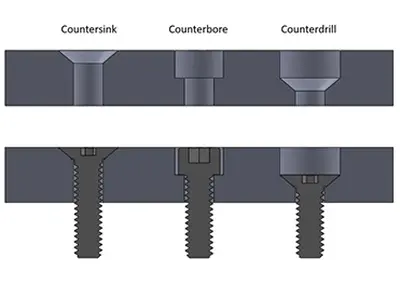 What is Counter Sink? Your Comprehensive GuideOctober 8, 2023A countersink is a conical hole that is typically drilled or milled into a material, such as wood, metal, or plastic, to allow the head of a screw or fastener to sit flush with or below the surface of the material.view
What is Counter Sink? Your Comprehensive GuideOctober 8, 2023A countersink is a conical hole that is typically drilled or milled into a material, such as wood, metal, or plastic, to allow the head of a screw or fastener to sit flush with or below the surface of the material.view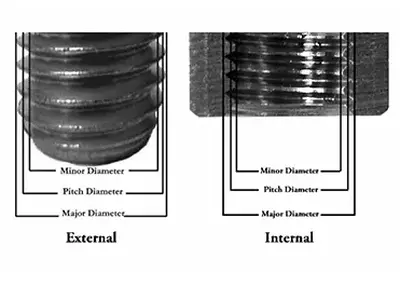 UNF Threads vs UNC Threads and What Are UNF Threads and UNC ThreadsNovember 17, 2023In the intricate world of CNC machining, understanding the nuances of UNF Threads and UNC Threads is paramount. These threading standards, Unified National Fine (UNF) and Unified National Coarse (UNC), serve as the bedrock of precision in mechanical engineering. Let's delve into the specifics, exploring their applications, differences, and the critical role they play in the realm of precision machining.view
UNF Threads vs UNC Threads and What Are UNF Threads and UNC ThreadsNovember 17, 2023In the intricate world of CNC machining, understanding the nuances of UNF Threads and UNC Threads is paramount. These threading standards, Unified National Fine (UNF) and Unified National Coarse (UNC), serve as the bedrock of precision in mechanical engineering. Let's delve into the specifics, exploring their applications, differences, and the critical role they play in the realm of precision machining.view What Does Color Flaw Detection Mean?October 19, 2023Color flaw detection is a method of non-destructive testing, it is a surface inspection method, mainly used to detect such as the naked eye can not identify the cracks and other surface damage, such as the detection of stainless steel material near the surface defects (cracks), porosity, porosity, delamination, unwelded and unfused and other defects (also known as PT detection).view
What Does Color Flaw Detection Mean?October 19, 2023Color flaw detection is a method of non-destructive testing, it is a surface inspection method, mainly used to detect such as the naked eye can not identify the cracks and other surface damage, such as the detection of stainless steel material near the surface defects (cracks), porosity, porosity, delamination, unwelded and unfused and other defects (also known as PT detection).view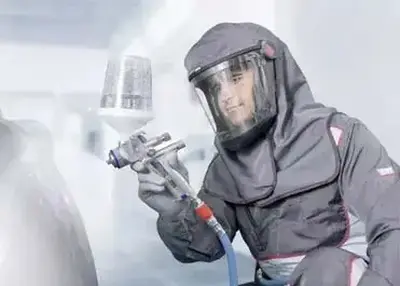 Powder Coating 101: What Is Powder Coating?August 14, 2023When seeking effective and durable finishing solutions for metal components, one term often comes up: "powder coating". The world of powder coating is full of mysteries. Whether you're c...view
Powder Coating 101: What Is Powder Coating?August 14, 2023When seeking effective and durable finishing solutions for metal components, one term often comes up: "powder coating". The world of powder coating is full of mysteries. Whether you're c...view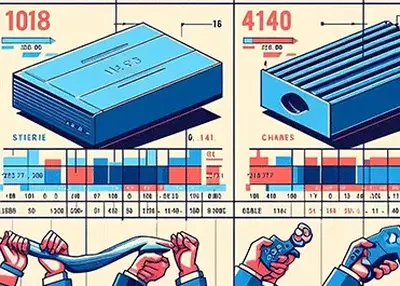 1018 vs. 4140 Steel: How to Choose the Right MaterialNovember 28, 2023Steel is one of the most widely used materials in various industries, such as construction, automotive, aerospace, and manufacturing. However, steel is also susceptible to corrosion and rust when exposed to moisture and oxygen.view
1018 vs. 4140 Steel: How to Choose the Right MaterialNovember 28, 2023Steel is one of the most widely used materials in various industries, such as construction, automotive, aerospace, and manufacturing. However, steel is also susceptible to corrosion and rust when exposed to moisture and oxygen.view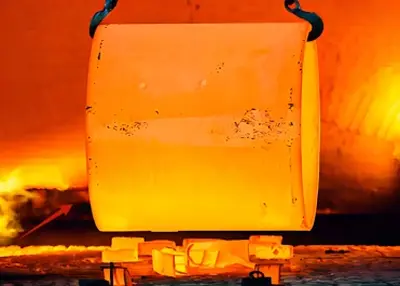 Heat Treatment of Metals: Process, Benefits, and Vital TipsMarch 15, 2024Heat treatment alters the properties of metals for different applications. The guide discusses the process, benefits, and vital tips of heat-treating metals.view
Heat Treatment of Metals: Process, Benefits, and Vital TipsMarch 15, 2024Heat treatment alters the properties of metals for different applications. The guide discusses the process, benefits, and vital tips of heat-treating metals.view